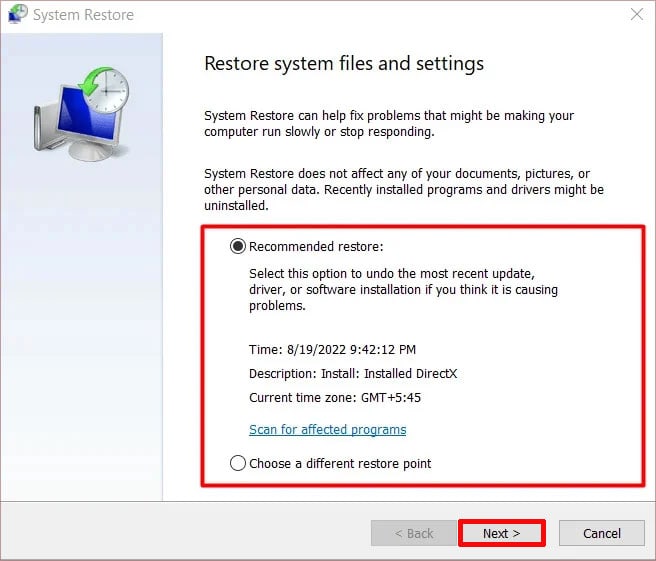Additionally, replacing or fixing the volsnap.sys files from the boot drive appear to be the primary solution for this error. This article also includes other general BSOD remedies that will undoubtedly assist you in fixing this situation.
What is Volsnap.sys BSOD Error?
The volsnap.sys is a system file located in the system volume, C:\Windows\System32\drivers of a Windows device. This file is the system provider for a feature referred to as the Volume Shadow Copy Service (VSS). The VSS is responsible for managing data backups, data mining, and restoring. When the system provider for VSS is corrupted Volsnap.sys BSOD can pop up. The Volsnap.sys BSOD error can occur with multiple stop error codes. Some of the common ones are 0x00000050 (PAGE_ FAULT_ IN_ A_ NONPAGED_ AREA) and 0x0000007E (SYSTEM_THREAD_ EXCEPTION_ NOT_HANDLED).
Reasons for volsnap.sys BSOD Error
Fixes for Volsnap.sys BSOD Error
The major fix, as reported by many users, seems to be replacing the volsnap.sys file from the system directory. However, before starting with any fixes, it is recommended that you keep your windows device up to date. It is seen that with the newer Windows updates the volsnap.sys BSOD has been fixed. Now, let’s get going with the fixes.
Restart Volume Shadow Copy Service
Since the cause for the volsnap.sys BSOD is linked with the Volume shadow copy service, restarting it can give a fix for this. To do it, follow these steps.This will restart the process related to the Volume Shadow Copy on Windows Devices and can solve the BSOD error.
Replace Volsnap.sys File
Due to viruses, malware, or some other reasons, the volsnap.sys file located in the boot volume might have gone corrupted and caused the BSOD. To fix this, you can Replace volsnap.sys file.You can get this file from Windows.old folder if you have upgraded the Windows OS to a new version. If you have performed a clean Windows install, this folder will be missing from your system drive. In that situation, you can get the volsnap.sys files from the Windows installation media.For the users that have windows.old folder, follow these steps to replace the file.If you have performed a clean OS install or for any reason, the windows.old folder is missing, follow these steps.
Use SFC and DISM Scans
SFC and DISM are great tools in Windows to scan and fix corrupted files. It is a fact that BSOD errors can also occur due to the corruption of the system files. To help to scan and repair these files, SFC and DISM offer great help. The SFC scans and restores the corrupted system files, and the DISM helps restore the Windows system image.To perform these scans, follow these steps.
System Restore
You can also revert the system settings to the previously created system restore point. The restore process doesn’t affect your files, but it will remove the feature or the system updates installed after creating the restore points. However, if you haven’t created a restore point earlier, you won’t be able to use this feature.
Perform System Reset
If this BSOD has been initiated after a recent feature update, it’s best to perform a system reset. It will revert the system configurations to default and thus give you a fix for the problem. Follow these steps to perform a system reset.











